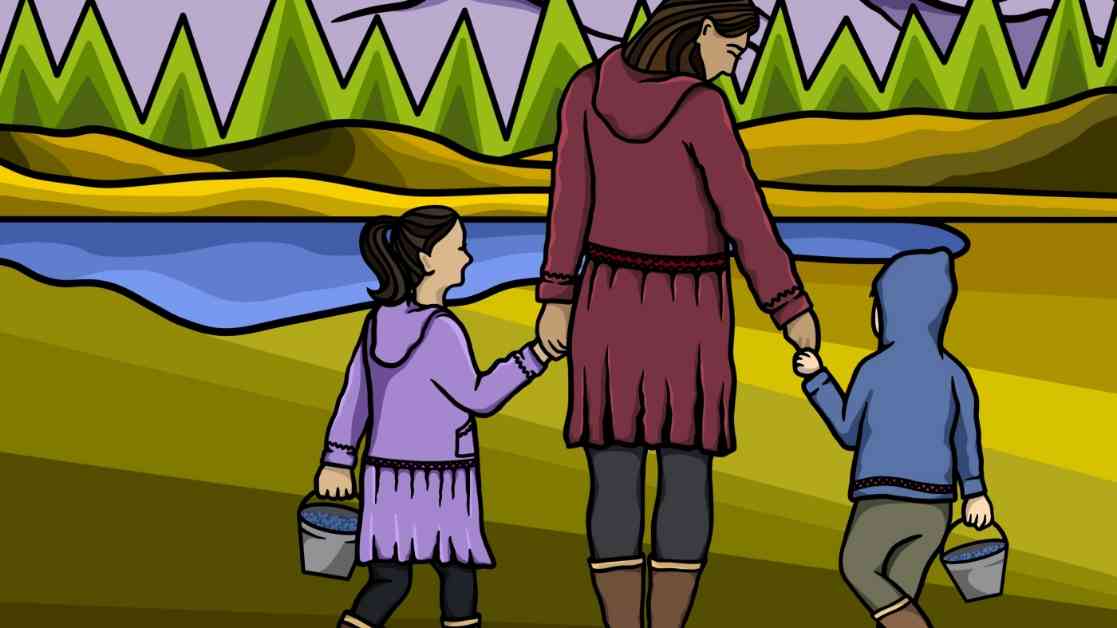Creating a Yup’ik Children’s Book: How Two Alaska Moms are Preserving Native Language and Culture
Nikki Corbett, a mother and small business owner from Alaska’s Kenai Peninsula, found herself in a dilemma. She couldn’t find any books to teach her young children the Yup’ik language. Growing up in the Yup’ik community of Bethel, Alaska, Corbett was more fluent in the language due to immersion. However, living away from the community where Yup’ik is not commonly spoken posed a challenge for her children’s language acquisition.
Faced with this gap in resources, Corbett, along with her friend Katie O’Connor, an illustrator and mother, decided to take matters into their own hands. They embarked on a journey to create a Yup’ik alphabet coloring book that would serve as an educational tool for young language learners.
The Need for Native Language Resources in Alaska
In Alaska, there is a significant market for educational materials that cater to Native languages, given that more than 20% of the state’s population is Native. Of the estimated 21,000 Alaskans who identify as Yup’ik, nearly half speak the language. Yup’ik is the most commonly spoken Native language in Alaska, highlighting the importance of preserving and promoting Native languages in the state.
For Corbett, the lack of resources to teach Yup’ik outside of the classroom was a pressing issue. While there are immersion schools in Alaska that provide Yup’ik learning materials, these resources are scarce in retail stores and online platforms. The historical subjugation of Native Americans and the suppression of Native language and culture have contributed to the decline in language fluency among younger generations.
According to Corbett, the fear of punishment for speaking Yup’ik led to a reluctance among parents to pass on the language to their children. This intergenerational trauma has hindered the transmission of Yup’ik language and culture, creating a void that Corbett and O’Connor sought to address through their initiative.
Empowering Alaska Native Voices in Literature
Katie O’Connor, an Inupiaq artist based in Nome, Alaska, shared a similar sentiment about the lack of representation of Alaska Native voices in literature. Growing up, O’Connor had limited exposure to her Inupiaq culture until after high school. She noted that most literature related to Alaska Native cultures is authored by non-Native individuals, with limited authentic representation of Native perspectives.
The collaboration between Corbett and O’Connor aimed to amplify Alaska Native voices and experiences through their Yup’ik alphabet coloring book. By infusing illustrations that celebrate Yup’ik culture and heritage, the book serves as a cultural artifact that bridges the gap between tradition and modernity. Each page of the book features a letter of the Yup’ik alphabet paired with visuals that reflect the rich tapestry of Alaska Native identity.
The Impact of Indigenous Language Initiatives
The initiative undertaken by Corbett and O’Connor has garnered significant interest and support from various stakeholders, including an Alaska school district. The demand for the coloring book underscores the importance of preserving Indigenous languages and fostering cultural pride among Alaska Natives. The book’s success reflects the resilience and strength of Alaska Native communities in reclaiming their language and heritage.
Corbett and O’Connor’s vision extends beyond the Yup’ik alphabet coloring book, as they plan to release a similar resource in the Inupiaq language. By expanding their reach to different Native communities, the duo aims to create a more inclusive and diverse literary landscape that reflects the richness of Alaska’s Indigenous cultures.
In a rapidly changing world where Indigenous languages face the threat of extinction, initiatives like the Yup’ik alphabet coloring book play a crucial role in revitalizing and preserving Native languages for future generations. Through their creative collaboration, Corbett and O’Connor have set a precedent for empowering Alaska Native voices in literature and promoting cultural revitalization within Indigenous communities.
In Conclusion
The journey of Nikki Corbett and Katie O’Connor exemplifies the power of grassroots initiatives in preserving and promoting Indigenous languages and cultures. Their Yup’ik alphabet coloring book not only serves as an educational tool for young language learners but also as a testament to the resilience and creativity of Alaska Native communities. By bridging the gap between tradition and modernity, Corbett and O’Connor have sparked a renewed interest in Native language revitalization and cultural preservation. As they continue to expand their reach to different Native communities, their impact will undoubtedly resonate far beyond the pages of a coloring book, leaving a lasting legacy of empowerment and pride for Alaska Natives.

